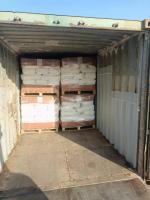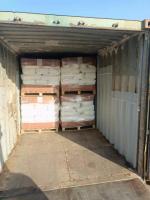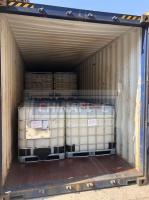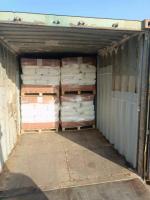Our Products
Polyacrylamide / cationic polyacrylamide MAGNAFLOC LT 22 S-DWI can be replaced by Chinafloc C

Cationic polyacrylamide Magnafloc LT 22 S-DWI is a specialized water-soluble polymer primarily used as a high-efficiency flocculant in various solid–liquid separation processes, with a strong focus on municipal and industrial water treatment applications. Its design as a liquid emulsion grade product allows for easier handling, rapid dissolution, and consistent performance compared to powder forms. The main application of Magnafloc LT 22 S-DWI centers on sludge dewatering and sludge thickening in wastewater treatment plants, although it is also valuable in other clarification and filtration processes where cationic charge interactions are critical for performance.
1. Sludge Dewatering in Wastewater Treatment
The primary and most important application of Magnafloc LT 22 S-DWI is in mechanical sludge dewatering processes in both municipal and industrial wastewater treatment facilities. Wastewater sludge typically contains a large proportion of water—often 95–99%—and its volume needs to be significantly reduced before disposal, incineration, or further treatment.
In sludge dewatering, the polymer acts as a flocculating agent, binding fine suspended solids and colloidal particles into larger, denser flocs. These flocs are easier to separate from water when processed through mechanical equipment such as:
-
Belt filter presses
-
Centrifuges
-
Plate-and-frame filter presses
-
Rotary drum thickeners
The cationic charge of Magnafloc LT 22 S-DWI is particularly effective in neutralizing the negative surface charges on sludge particles. This charge neutralization allows particles to come together more readily, forming robust flocs that resist shear forces in dewatering machinery. The result is:
-
Lower sludge volume (higher solids content in the cake)
-
Improved dryness of dewatered solids, which reduces disposal costs
-
Clearer filtrate or centrate, lowering the load on downstream polishing systems
https://youtu.be/TsOxvVbmUoE
2. Sludge Thickening
Before final dewatering, wastewater treatment plants often use sludge thickening to increase the solids concentration in sludge streams. Magnafloc LT 22 S-DWI is widely applied in gravity thickeners and dissolved air flotation (DAF) thickeners to improve settling and separation efficiency.
The use of a cationic polyacrylamide in thickening:
-
Improves sludge blanket formation in gravity thickeners
-
Enhances float formation in DAF units
-
Reduces the volume of sludge sent to dewatering equipment
-
Optimizes chemical consumption in later stages
This intermediate thickening stage is important for energy savings and cost efficiency in large-scale operations.
3. Industrial Process Water Treatment
Magnafloc LT 22 S-DWI is also applied in industrial water clarification systems. In industries such as food processing, pulp & paper, textiles, and chemical manufacturing, wastewater streams often contain high levels of organic solids and emulsified contaminants that require treatment before discharge or reuse.
In these contexts, the polymer helps:
-
Remove suspended solids from process effluents
-
Improve oil–water separation in oily wastewater
-
Enhance the performance of dissolved air flotation (DAF) units used for industrial wastewater polishing
4. Use in Municipal Drinking Water Sludge Management
Although Magnafloc LT 22 S-DWI is not used directly in drinking water production (due to purity requirements), it is widely used in managing sludge generated by drinking water plants. When alum, ferric chloride, or other coagulants are used for water clarification, the resulting sludge can be difficult to handle.
Applying cationic polyacrylamide:
-
Aids in the dewatering of alum/ferric sludge
-
Reduces sludge disposal costs
-
Produces a clearer supernatant, allowing for water recycle or safe discharge
5. Mechanism of Action
The success of Magnafloc LT 22 S-DWI in these applications comes from its dual action:
-
Charge neutralization – The cationic charges on the polymer backbone bind to negatively charged suspended particles and colloids.
-
Bridging – Long polymer chains physically link multiple particles together, forming larger, stronger flocs.
This mechanism is highly effective even at low doses, making it a cost-efficient choice for wastewater treatment plants looking to optimize chemical usage while maintaining performance.
6. Advantages of Using Magnafloc LT 22 S-DWI
Compared to powder-form cationic polyacrylamides, the liquid emulsion format of LT 22 S-DWI offers several operational benefits:
-
Faster dissolution in make-down systems
-
Lower dust hazards during handling
-
Easier dosing control with standard metering pumps
-
More consistent quality due to pre-formulated emulsion stability
These advantages reduce operational downtime and simplify plant logistics.
7. Environmental and Economic Impact
Using Magnafloc LT 22 S-DWI effectively contributes to:
-
Reduced landfill volumes by increasing sludge solids content
-
Lower transportation costs due to reduced water weight in sludge cake
-
Improved effluent quality that meets regulatory discharge limits
-
Optimized equipment efficiency, reducing wear and energy costs
In industries where wastewater treatment costs form a significant part of operational expenses, these benefits directly translate into measurable cost savings.
8. Example Applications by Industry
-
Municipal wastewater treatment plants (WWTPs) – Sludge thickening and dewatering, improving belt press throughput, reducing polymer consumption in final polishing stages.
-
Food & beverage industry – Dewatering organic sludges from meat processing, dairy effluents, and brewery wastewater.
-
Pulp & paper mills – Treating fibrous sludge, improving solids capture, and reducing final sludge moisture.
-
Textile industry – Clarifying dye house effluents and dewatering sludge from color removal systems.
-
Chemical manufacturing – Treating process slurries and oily wastewater streams.
9. Dosage and Handling Notes
While the specific dose of Magnafloc LT 22 S-DWI depends on sludge characteristics, typical application ranges are between 1–10 kg of active polymer per metric ton of dry solids.
Handling considerations include:
-
Avoiding extreme temperatures that may destabilize the emulsion
-
Using low-shear mixing to prevent polymer chain degradation
-
Storing in sealed containers to prevent contamination and phase separation
Summary
The main application of Magnafloc LT 22 S-DWI cationic polyacrylamide is in sludge dewatering and thickening for municipal and industrial wastewater treatment. Its strong cationic charge, long polymer chains, and liquid emulsion form make it highly effective in binding and aggregating suspended solids, leading to reduced sludge volumes, improved solids capture, and clearer filtrate. It also plays an important role in industrial effluent clarification and drinking water sludge management, delivering both environmental and economic benefits.





